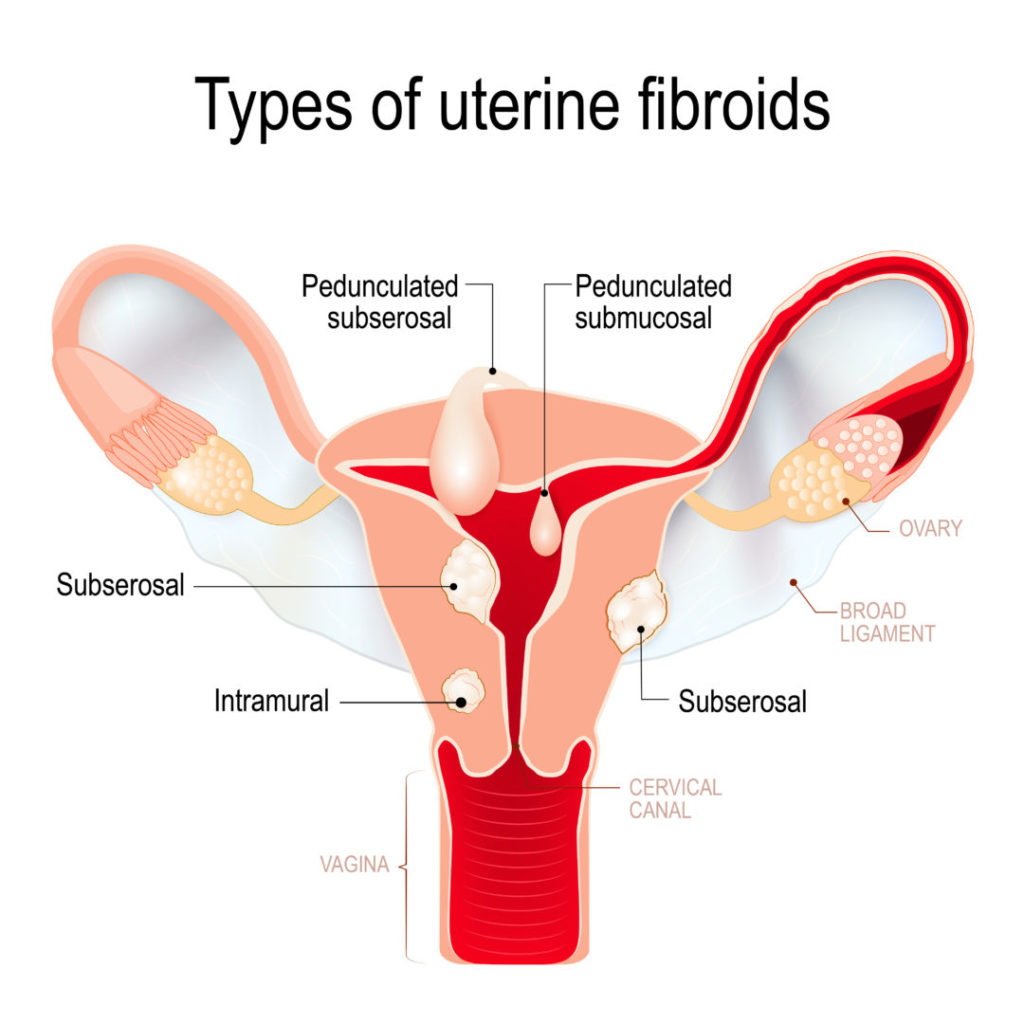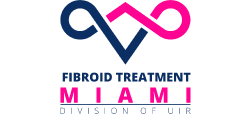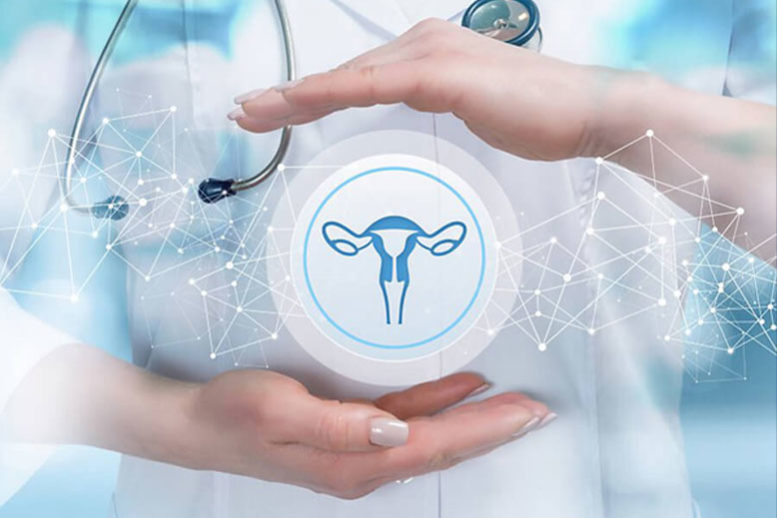You might be unsure of your treatment options if you have uterine fibroids. In the past, many medical professionals would advise a hysterectomy for fibroids, but this is no longer the only option. While some individuals may require a hysterectomy, others may be able to treat their fibroids with less invasive procedures. Continue reading to discover more about uterine fibroids treatment options.
Noncancerous growths called uterine fibroids are categorized based on where they develop. Uterine fibroids come in four different varieties:
- Submucosal fibroids grow inside the uterine cavity.
- Intramural fibroids develop in the walls of the uterus. These fibroids often bulge inward, occupying some of the space inside your womb.
- Subserosal fibroids grow outside the uterus.
- Pedunculated fibroids are attached to the uterus via a stalk. They may look a little like mushrooms.
Give us a call we can help. Dade County: (305) 701-3001.

Looking to find the Best Treatment for Uterine Fibroids in Miami, we can help. Dade County: (305) 701-3001.
Depending on the size and location of your fibroids, you have a variety of treatment choices. Larger fibroids may be harder to treat and necessitate more intrusive techniques.
Do My Fibroids Need Treatment?
Uterine fibroids can range in size and severity. Some may not show any symptoms since they are very small or even invisible to the human eye. Others are significant enough to result in discomfort, bleeding, or other unfavorable symptoms. Treatment might not be necessary if your fibroids aren’t resulting in any symptoms or health issues. Fibroids might occasionally interfere with your fertility or lead to difficulties during pregnancy. You should seek medical attention if your fibroids are painful or are preventing you from going about your everyday business.
Is a Hysterectomy the only option I have if I need treatment?
Many fibroids-afflicted women would prefer to avoid having their ovaries removed. After all, a hysterectomy is an invasive procedure with a protracted recovery period for the excision of the fibroid. It can be traumatizing to have the uterus removed, especially for women who planned to have children in the future.
Fortunately, you no longer have to have a hysterectomy. In fact, before performing a hysterectomy for fibroids, the majority of doctors now prefer to exhaust all available forms of treatment. Your uterus’s health and functionality can be maintained with the help of a number of treatments.
Hysterectomy Alternatives for Fibroids
Depending on your age, general health, the severity of your symptoms, and whether you have any future pregnancies planned, there are many uterine fibroid treatment options available. However, most of the time, surgery or prescription medication can be used to treat fibroids.
Looking to find the Best Treatment for Uterine Fibroids in Miami, we can help. Dade County: (305) 701-3001.
HEAR FROM ONE OF OUR PATIENTS WHO HAD
THE UFE PROCEDURE
MEDICATIONS
Small fibroids are frequently treated with prescription medications. Drugs that regulate hormones can help manage undesirable symptoms like cramping or heavy bleeding. Gonadotropin-releasing hormone agonists (GnRHa) are medications that have been shown to be particularly effective in treating fibroids. Over time, GnRHa medications help reduce fibroids. But these medications could have negative effects and can be pricey. They only serve as a short-term fix; they only function while you are taking them. Your fibroids can come back if you stop taking your medicine.
Medication options offer pros and cons, just like any other form of treatment. You can decide if taking medication is the best course of action for your fibroids with the assistance of your obstetrician-gynecologist (OBGYN).
Other Treatment Options
Procedures to reduce or remove fibroids are available if medication is not an option.
The surgical excision of uterine fibroids is called a myomectomy. There is no need for a big incision with some laparoscopic myomectomies, but general anesthesia is still necessary. More invasive surgery may be required if your fibroids are large or deeply buried in the uterine tissue. Depending on the complexity of the surgery, recovery times can change. (After a myomectomy, the majority of patients can still become pregnant, however, some women may be more likely to experience pregnancy-related difficulties. Your OBGYN can assist you in weighing the risks to determine whether or not this kind of surgery will satisfy your needs.
Another choice is endometrial ablation. The treatment of severe bleeding brought on by fibroids or other gynecological issues frequently involves this technique. The uterine lining is permanently removed or destroyed during an endometrial ablation. It’s regarded as minor surgery and frequently done as an outpatient procedure. The majority of women recover rapidly after the surgery, which has low hazards. Endometrial ablation patients, however, are unable to conceive again in the future. This treatment can be a possibility for you if you don’t intend to have any additional children. You might need to think about trying a different treatment if you want to maintain your fertility.
For many women, uterine fibroid embolization (UFE) is a fantastic alternative. It does not prevent further pregnancies, unlike an endometrial ablation. UFE is a minimally invasive, nonsurgical alternative to a myomectomy or hysterectomy.
A catheter is inserted during a UFE into a vein in your leg and into the arteries that feed blood to the fibroids. Through the catheter, the radiologist inserts minute plastic particles into certain arteries. The fibroid shrinks and dies as a result of these particles obstructing blood flow.
UFE is frequently carried out without hospitalization. There is a chance of problems and little to no scarring. UFE recovery is quick, making it an excellent option for individuals who want to avoid hospital inpatient surgery and a protracted recovery.
INPATIENT VS. OUTPATIENT CARE
Hysterectomy is unquestionably a serious surgical procedure. It frequently necessitates spending the night in the hospital. Infections following surgery, including hysterectomies, are also more likely to occur.
Fortunately, a hysterectomy is not your only choice if you have fibroids. Without needing invasive surgery, symptomatic alleviation can be achieved with outpatient procedures like UFE.
Looking to find the Best Treatment for Uterine Fibroids in Miami, we can help. Dade County: (305) 701-3001.
HAVE YOU BEEN DIAGNOSED WITH UTERINE FIBROIDS?
Educating yourself is great, but every patient is different. Don’t hesitate to contact us









